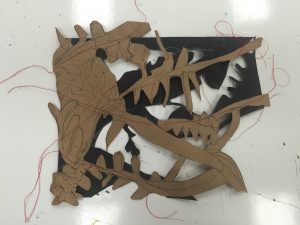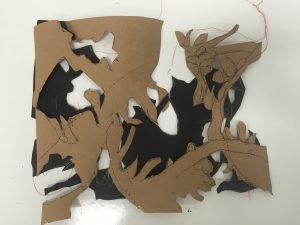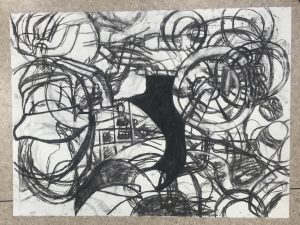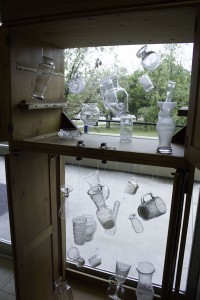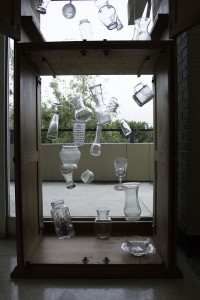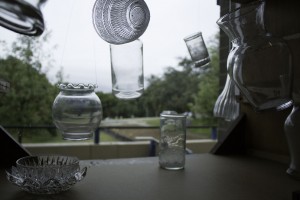Rules:
- Draw looking up while sitting under a tree
- Draw the negative space of the sky on black paper with silver for 5 min
- Draw positive space of the trees and branches on butcher paper with black for 5 min
- Cut the drawings out
- Sew them together
Challenges:
After the first 5 drawings, I was tired. The drawing while looking up became more like blind contour drawing as I was looking less at my paper and more up through the trees at the shapes and forms I was seeing. This was more automatic than I expected, which was kind of nice. But when it came to cutting, I realized how much conscious thinking and mental planning I had to do in order not to cut out the wrong parts. I ended up abandoning trying to hard to cut out he right parts and keep the paper all together in one piece. I tied to let the cutting be almost as automatic as the drawing, and focused less on whether I was doing it “right.”
I shared all of this in our first critique about the first 5 that I had made:
Questions that came up throughout critique:
What does a layer mean?
What is the complexity of the relationship between layers?
Are the objects on surface? Are objects revealing the surface, or being revealed through the surface?
What’s the purpose of sewing?
Could I spend less time drawing, and more time drawing with thread?
Why red thread? – scars, blood, visible
Why thread?
Answers and Ideas Going Forward:
I was asked to interrogate myself about the purpose of sewing. So I did:
I like the concept and aesthetic idea of utility. I like seeing the seams, the idea of seeing the inside on the outside, and the ability to see what is holding two things together. Because I am essentially mashing two images into one, even through they are technically two different components of the same image, the visibility of the stitch across the paper shows he part of the process in which I force the two components to become one. I am okay with the fact that zipping across the cut-outs with my sewing machine appears unnatural, as that reflects the inseparability of the negative and positive space, and the mental capacity it takes to draw each part independently. The sewing represents the inability to mentally separate them and portray them accurately.
A comment was made about flipping the pieces over so that the black is in front, which gives more of the silhouette look that I thought about prior to starting the project. The red stitching also stands out a lot more when the pen and silver marks are gone and not distracting from it. Facing the way they are in the photos above, they have more of a topographic association, and I like how the stitching looks like roads or rivers on a map, cutting through the land.
Going forward, I’m going to think more consciously about where and how I sew on the pieces, using the thread as another instrument of drawing rather than just an element that holds the pieces together. I also might play with dimension, and different cutting strategies that will hold the pieces together better on their own. I may also reverse the order and have the black sewn on top, depending on the piece.



